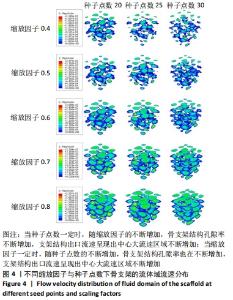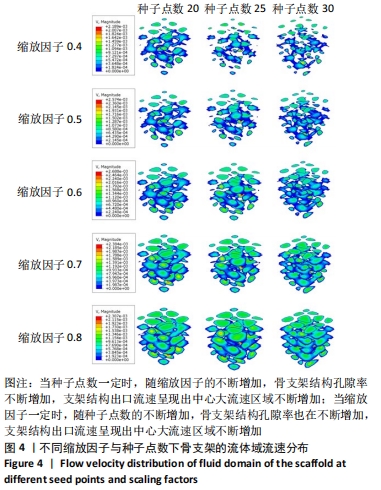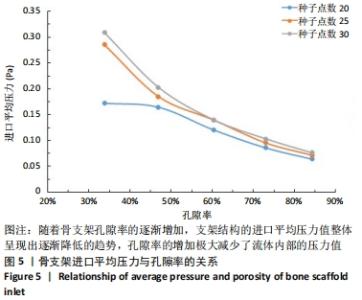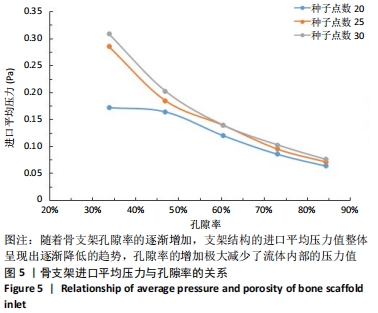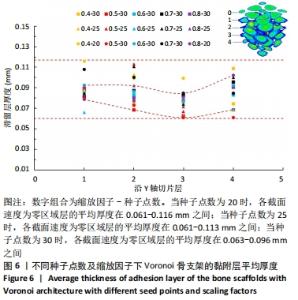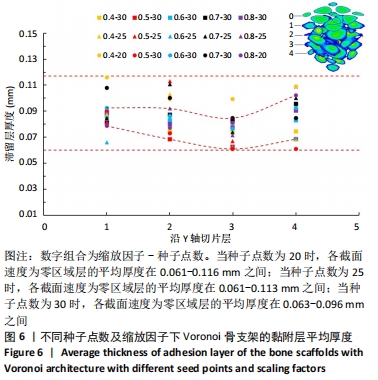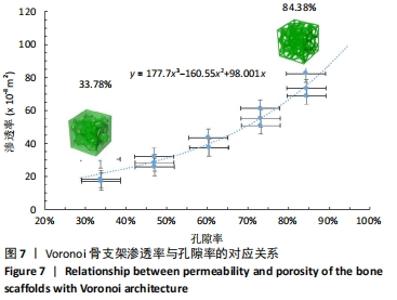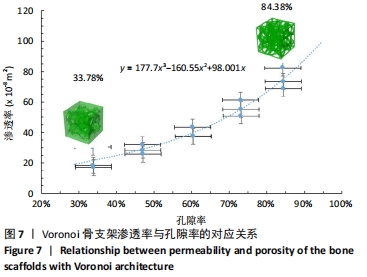[1] DIAS MR, FERNANDES PR, GUEDES JM, et al. Permeability analysis of scaffolds for bone tissue engineering. J Biomech. 2012;45(6):938-944.
[2] O’BRIEN FJ, HARLEY BA, WALLER MA, et al. The effect of pore size on permeability and cell attachment in collagen scaffolds for tissue engineering. Technol Health Care. 2007;15(1):3-17.
[3] SYAHROM A, ABDUL KADIR MR, ABDULLAH J, et al. Permeability studies of artificial and natural cancellous bone structures. Med Eng Phys. 2013;35(6): 792-799.
[4] EGAN PF, GONELLA VC, ENGENSPERGER M, et al. Computationally designed lattices with tuned properties for tissue engineering using 3D printing. PLoS One. 2017;12(8):e182902.
[5] ZHAO L, PEI X, JIANG L, et al. Bionic design and 3D printing of porous titanium alloy scaffolds for bone tissue repair. Compos Part B Eng. 2019;162:154-161.
[6] GÓMEZ S, VLAD MD, LÓPEZ J, et al. Design and properties of 3D scaffolds for bone tissue engineering. Acta Biomater. 2016;42:341-350.
[7] FENG J, FU J, SHANG C, et al. Porous scaffold design by solid T-splines and triply periodic minimal surfaces. Comput Methods Appl Mech Eng. 2018; 336:333-352.
[8] BEN ALI N, KHLIF M, HAMMAMI D, et al. Mechanical and morphological characterization of spherical cell porous structures manufactured using FDM process. Eng Fract Mech. 2019;216:106527.
[9] PENG WM, LIU YF, JIANG XF, et al. Bionic mechanical design and 3D printing of novel porous Ti6Al4V implants for biomedical applications. J Zhejiang Univ Sci B. 2019;20(8):647-659.
[10] ATOUFI Z, ZARRINTAJ P, MOTLAGH GH, et al. A novel bio electro active alginate-aniline tetramer/ agarose scaffold for tissue engineering: synthesis, characterization, drug release and cell culture study. J Biomater Sci Polym Ed. 2017;28(15):1617-1638.
[11] TARAFDER S, BALLA VK, DAVIES NM, et al. Microwave-sintered 3D printed tricalcium phosphate scaffolds for bone tissue engineering. J Tissue Eng Regen Med. 2013;7(8):631-641.
[12] 方妤露,易兵成,沈炎冰,等.玉米壳纤维增强壳聚糖基水凝胶应用于软骨组织工程支架的潜力[J].中国组织工程研究,2020,24(34):5493-5501.
[13] LI Y, BAI Y, PAN J, et al. A hybrid 3D-printed aspirin-laden liposome composite scaffold for bone tissue engineering. J Mater Chem B. 2019;7(4):619-629.
[14] 张佳.个体化组织工程骨支架仿生设计与优化[D].西安:陕西科技大学,2018.
[15] 陈策.分形骨支架力学特性与渗透特性的数值研究[D].南京:东南大学,2018.
[16] WANG G, SHEN L, ZHAO J, et al. Design and Compressive Behavior of Controllable Irregular Porous Scaffolds: Based on Voronoi-Tessellation and for Additive Manufacturing. ACS Biomater Sci Eng. 2018;4(2):719-727.
[17] 王翔.基于3D打印的人工骨骼支架结构设计[D].南宁:广西大学,2019.
[18] 赵文英.基于极小曲面的骨支架力学及渗透性分析[D].大连:大连理工大学,2019.
[19] BLANQUER S, WERNER M, HANNULA M, et al. Surface curvature in triply-periodic minimal surface architectures as a distinct design parameter in preparing advanced tissue engineering scaffolds. Biofabrication. 2017;9(2): 25001.
[20] WANG Z, HUANG C, WANG J, et al. Design and Simulation of Flow Field for Bone Tissue Engineering Scaffold Based on Triply Periodic Minimal Surface. Chin J Mech Eng. 2019;32(1):1-10.
|
